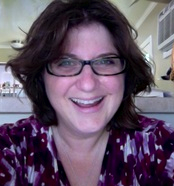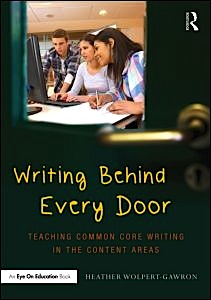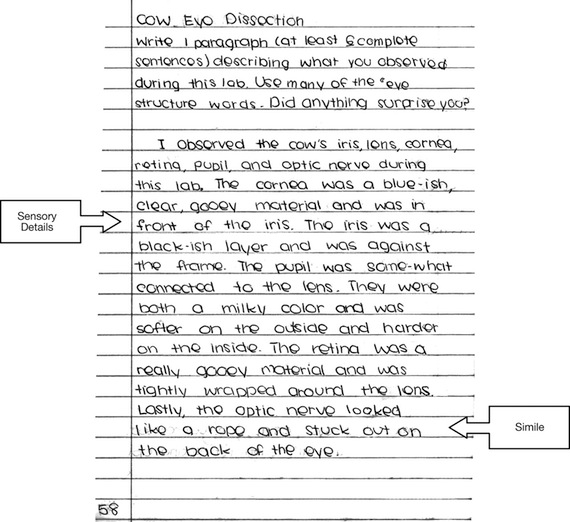Descriptive Writing: Just Right for Science Class
Heather Wolpert-Gawron is a middle school teacher in Southern California and the author of several books about teaching, including her latest — Writing Behind Every Door: Teaching Common Core Writing in the Content Areas.

There is a myth that because narrative appears as a small percentage of the writing taught in secondary classes, that perhaps the ability to use its techniques is less important in the eyes of Common Core. This is false.
In fact, without narrative techniques, your informational writing assignments would come in as dry as a desert, the passion for the subject dissipated, leaving behind mere regurgitation of fact.
Narrative writing belongs, to a certain degree, in every classroom. It is, to many students, the fun writing genre. ELA teachers get to see this. However, if we can weave narrative techniques into other categories of writing, then that fun aspect begins to bleed and ripple into other areas as well. Narrative strategies infuse content with creativity and with an added layer of student personality that aids in ownership of the content.
I believe there are three narrative concepts that teachers in areas outside of ELA ought to be aware of. They are as follows:
- Figurative language
- Sequence (plot structure)
- Theme
Know that these are not elements that I believe math and science and history teachers should be responsible to teach, but rather, that they could be responsible to praise, assess, and expect. In so doing, they will be supporting ELA teachers and the job that they must do. They will also be pulling a better quality of work and comprehension out of their students.
Using figurative language in science reports
Here, I will go into more detail about one of these concepts—figurative language—and show you how it can be used in science class.
Figurative language communicates ideas over and beyond the literal meaning of words. We‘re talking about elements like these:
- metaphors
- similes
- hyperbole
- sensory details

While a science teacher doesn‘t have to require the use of figurative language, it might be important to note that a student who utilizes this strategy might illustrate a really deep comprehension of material. The image below is an excerpt from a student’s science writer’s notebook. In it, she uses narrative techniques to describe the cow’s eye she has recently dissected. I’ve annotated several of the techniques.
Using other narrative techniques
Figurative language isn’t the only narrative technique that can be used in science. Plot can be used when we talk about Sequencing and Chronological Order. Was there Suspense as the water boiled? Was there a Turning Point when you checked the results of your experiment?
Theme is about deriving an overall message, a lesson learned, from an experience.
Ultimately, we are talking about holding students accountable for what happens in classes other than our own. We are talking about being aware of universal vocabulary so that our teachings as educators support the students we share.
Now, don’t get me wrong. Those of us who are writing teachers have a role to play in making sure we are having kids write about subjects other than literature. It’s a reciprocal responsibility after all. But that’s for another post (coming soon!).

Excerpted with permission from Writing Behind Every Door: Teaching Common Core Writing in the Content Areas (Routledge, 2014)
_____
Heather Wolpert-Gawron is an award-winning middle school teacher and a popular blogger at Edutopia and her personal site, Tweenteacher. Her first book, ’Tween Crayons and Curfews: Tips for Middle School Teachers¸was published by Routledge Eye On Education in 2011. Follow her @tweenteacher.




































